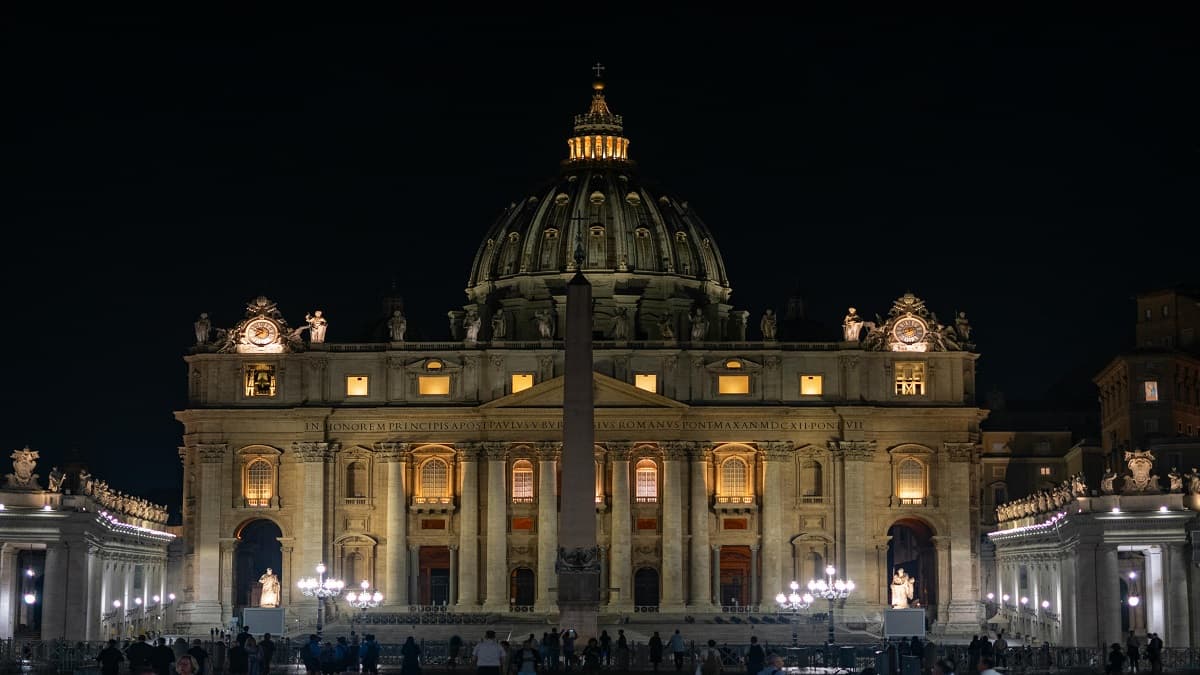Obelisks: What is there to Know about them?
The obelisk is a memorial monument from ancient Egypt: made in stone, it symbolizes a ray of sunshine; in Italian we use the ancient Greek word obelìskos or "needle".
The oldest obelisks date back to 2,000 B.C., they can be of various dimensions and they celebrated divinities, pharaohs and the deceased.

Why is there an Egyptian Obelisk in St. Peter’s Square?
The obelisk that originally embellished Caligula’s circus was moved in front of the façade of the Basilica of Saint Peter (which was under construction at the time) by Pope Sixtus V in 1586, to celebrate the triumph of the Church over paganism and heresy. The obelisk was "Christianized" with inscriptions and with the symbols of the Sistine coat of arms: the lions, the three mountains and a bronze cross, which in the 18th century was embellished with the relic of the True Cross.
The rationalization of the space in front of the Basilica will be completed centuries later with Gian Lorenzo Bernini’s colonnade and Via della Conciliazione.
The Numbers of the Vatican Obelisk
Of the 13 ancient obelisks in Rome, the Vatican Obelisk is the second largest after the one that can be found in front of the Archbasilica of St. John Lateran.
Being devoid of Egyptian symbols (hieroglyphs), its paternity was in doubt; thanks to sources we know that it was commissioned by Amenemhet II for the city of Heliopolis (northeast of Cairo) and is therefore about 4000 years old.
It is a block of red granite 25.31 meters tall and, with its base, reaches a height of 33.56 meters. It weighs 330 tons (the base alone weighs 175).
The obelisk was initially located where the current Sacristy of St. Peter’s stands, and Pope Sisto’s architect, Domenico Fontana, employed 13 months in moving it, using a wooden castle structure connected to ropes and winches, and the driving force of 900 men and 75 horses.
Transported to Rome on a Ship Filled with Lentils
With the conquest of Egypt by Octavian in 30 B.C., the Romans obtained vast spoils of war.
The Vatican obelisk was first transported to Alexandria under the orders of Octavianus, who dedicated it to Julius Caesar. Between 37 and 41 A.D. it finally arrived in Rome because Caligula wanted it in his private circus, and he dedicated it to his predecessors, Augustus "son of the divine Julius" and Tiberius "son of the divine Augustus".
The obelisk travelled across the Mediterranean on an 80-metre long ship, loaded with 1,000 tons of lentils to protect it, and after transporting its prestigious cargo the ship was filled with pozzuolana (porous volcanic ash) and sunk in the Port of Ostia in order to build a pier.
After the burning of Rome Nero unleashed the first persecution of the Christian community, in which St. Peter died, crucified in the Vatican Circus, under the Egyptian obelisk.
The Obelisk and the Solstice: the Sundial in St. Peter’s Square
In 1817 the pavement of St. Peter’s Square was inlaid with a compass rose and a sundial. The shadow cast by the obelisk marks the movements of the sun at midday on the signs of the zodiac: and on the two discs at the ends we can observe the two solstices, both that of summer and that of winter.

Vox City, The Vox Group's Dedicated Business-To-Consumer Arm For The Past Five Years, Is Staffed By Veteran Travel Industry Experts With A Combined 21 Years Of Expertise In The Tourism Industry. Let's Explore The Beauty Of Travel In Your Own Way At Your Own Pace.
Vox City International 63 Holly Walk | CV32 4JG Leamington Spa
2025 Vox City, All rights reserved.





